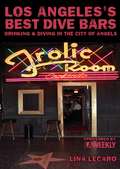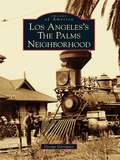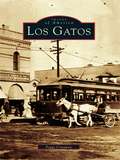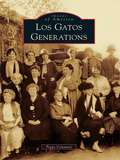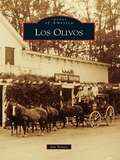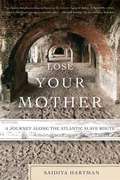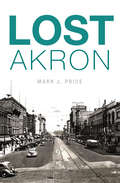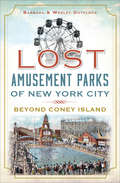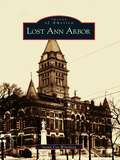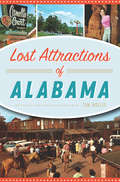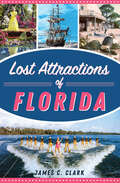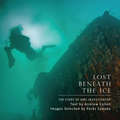- Table View
- List View
Los Angeles's Best Dive Bars
by Lina LecaroLos Angeles might be the capital of conspicuous consumption, but the other cliché about "La La Land"-that it's a cultural wasteland-couldn't be further from the truth. For every "Extreme Makeover-Club Edition" (in which would-be impresarios continually swankify their establishments in a relentless quest to be "the" hot spot du jour), there is a well-worn drinking hole full of history, serving up a far more elusive and seductive mix of stiff drinks, loose atmosphere and keep-it-real regulars.In Los Angeles' Best Dive Bars, you'll get the scoop and the poop on the city's liveliest, lowlife n' liquor-soaked landmarks. This essential booze bible has the lowdown on which bars serve free food, which have great-and not so great-karaoke, bars that appear in your favorite movies and much, much more. Whether you're looking for a friendly spot where "everybody knows your name," a filthy blackened cave where nobody ever will, a gently-gentrified hole specked with dive-obsessed hipsters or a dusty relic full of hip-replacements, you're sure to find a spot to soak up-and get soaked in-here in these pages.LINA LECARO is the nightlife columnist for the LA Weekly. She has been patrolling Los Angeles' most decadent after dark dens and its grungiest grottos with equal aplomb for over twenty years (i.e. before she could actually drink legally). A born and bred Angeleno, she's no angel when it comes to digging deep into LA's most harrowing drunkard-approved hovels . She might prefer her cocktails sweet, but her favorite bars (and barflys) have always been anything but.
Los Angeles's The Palms Neighborhood
by George GarriguesThe Westside neighborhood of Palms is the oldest suburb of Los Angeles. Founded in 1886 halfway between L.A. and the beach on a steam railroad line, Palms attracted wealthy Angelinos escaping the summer's downtown heat as well as Easterners seeking a new life in "the natural home of the fig, olive, lemon, lime, apricot, and that class of fruit that brings the largest profit in the local market." Rancho Park and Mar Vista had yet to make it onto maps--it was all "The Palms." The school district stretched from the Santa Monica Mountains on the north toward Redondo Beach on the south. A lively social and business life sprang up, but gradually the metropolis enfolded Palms, which was annexed into Los Angeles in 1915. After World War II, subdivisions brought young families, the flatlands became a huge swath of apartments, and the barren hill area became the tree-shrouded Westside Village.
Los Angeles, Baby!
by Feather FloresExploring Los Angeles is so much fun! See all around the City of Angels in this rhyming picture book sure to delight visitors and proud Angelenos alike.Today's a bright and sunny day!Come on, let's go explore LA! From the Hollywood Bowl to Santa Monica Pier, there's something for everyone in the bright and bustling city of Los Angeles! With stops at the Griffith Observatory, the Hollywood Walk of Fame, Olvera Street, and more, this rhyming read-aloud is just right for young readers—and their parents!—who are eager for adventure. Get ready to experience a truly memorable day in LA! A CELEBRATION OF LOS ANGELES: Featuring some of LA's most popular foods, iconic destinations, and family-friendly attractions, this picture book is a true celebration of what makes Los Angeles special. GO-TO GIFT FOR TODDLERS ON THE GO: Whether for an LA resident or a transplant, a frequent visitor or a first-time traveler, those planning a trip or simply learning about one of the United States' most prominent cities, this lighthearted introduction to the City of Angels is a gift-giver's dream, offering a wonderful way to share meaningful adventures with the little readers they love. Perfect for:Parents and grandparentsLos Angeles travelers and touristsGift-givers
Los Angeles, California
by Jeffrey Samudio Portia LeeLos Angeles was founded in 1781 as one of the two original Spanish pueblos in California. At the time of statehood in 1851, Los Angeles began to reconsider its "cow town" condition, and gradually transformed an American city into the magnificent metropolis we know today. Drawn from the collections of the University of Southern California, the Los Angeles Public Library, and the Los Angeles City Archives, Jeffrey Samudio and Portia Lee record the history of a community that established itself culturally as it grew exponentially. By 1945, the small town that had begun with 28 square miles in the late 19th century had grown to 450 square miles through almost 100 annexations. Businessmen constructed a downtown streetscape whose architecture elicited envy in other cities, hotels catered to visitors with such enthusiasm that guests eventually returned with ambitious schemes of their own, and the construction of an elaborate freeway system suddenly made Los Angeles a drive-in city.
Los Angeles: People, Places, and the Castle on the Hill
by A. M. HomesThe surreal City of Angels is a unique amalgam of past and present, tradition and revolution, dreamscape and reality. Whether in history books or on the silver screen, the Los Angeles landscape has long served as an ever-shifting backdrop against which countless American anxieties and aspirations play out. New York-based novelist and short-story writer A. M. Homes distills the elusive, quixotic splendor of this most beguiling of great American cities. She checks us into the famed hotel Chateau Marmont and uses life at this iconic landmark as a multifaceted prism through which to view and experience Los Angeles culture, past and present.
Los Gatos
by Peggy ConawayNestled in the heart of a dramatic natural amphitheater formed by the Santa Cruz Mountains, Los Gatos serves as the gateway from the Santa Clara Valley to the Pacific Ocean. This happy accident of location allowed historic Los Gatos to witness a colorful parade of swashbuckling explorers, Franciscan padres, and hearty American pioneers, many of whom came to harvest virgin redwood forests from the mountains and grow fruit in exceptionally fertile soil. Los Gatos grew up around the 1850s flour mill established by Scotsman James Alexander Forbes. In 1878 the railroad arrived and was a powerful influence for more than 80 years. Named for the mountain lions that still inhabit the area, Los Gatos has reflected the expansive richness of the California Dream for 150 years.
Los Gatos (Images of Modern America)
by Peggy Conaway BergtoldA magical place to grow up and an exceptionally lovely place to live, Los Gatos has transformed from its agrarian roots to an upscale community at the southern tip of Silicon Valley. With its sublime Mediterranean climate and stunning natural setting, the town has progressed while still valiantly protecting its small town character and customs. The 1989 Loma Prieta earthquake hit Los Gatos hard, creating a devastating litany of 481 damaged homes and businesses, many of them historic. Los Gatos made the decision to rebuild and restore what had been lost, with picture-perfect results.
Los Gatos Generations
by Peggy ConawayFrom its beginnings as a Mexican land grant, Los Gatos has been filled with promise. A beautiful natural setting attracted a fascinating population of innovators, inventors, intellectuals, and artists; those who dreamed and those who cultivated the splendid richness of the soil. A gracious integration of fruit, flowers, and a gentle, delightful climate allowed settlers to thrive and find sure success. Inevitable tragedy and troubles also beset the little settlement at the western edge of the country, especially a series of devastating fires and episodes of raw frontier violence in the 1880s. Yet through all of its history, Los Gatos has prided itself on its strong sense of community, each generation proud of its heritage and of what they accomplished. A gathering of talent graced each decade--hopeful, hardworking people who appreciated the unique combination of an ideal place and abundant opportunity existent in their corner of the "Valley of Hearts Delight."
Los Olivos
by Jim NorrisLos Olivos was named for central Santa Barbara County wine country's other small fruit. The local fascination for vineyards is fairly new, but Los Olivos has thrived as a community since not long after Native American days. Los Olivos grew important enough to local trade and travel to become the inland terminus of the narrow-gauge Pacific Coast Railway, which zigzagged southeasterly from Avila Beach. The town was platted in 1887 by the West Coast Land Company and the railroad's owners. The dry-farming of grain and cattle ranches eventually drove the local economy in the surrounding Santa Ynez River Valley. Today Los Olivos thrives as a way station and gateway for tourists enjoying the beauty of the valley, the Santa Ynez Mountains, Los Padres National Forest, and nearby attractions, including the Mission Santa Ines, wineries, Solvang, and Santa Barbara.
Los Osos/Baywood Park (Images of America)
by Lynette TornatzkyLos Osos and Baywood Park, on the south end of Morro Bay, were two independent areas that developed separately during different periods. Over time, they grew together. In 1974, the US Post Office eliminated the Baywood branch and declared the area as Los Osos. Residents, passionate about their neighborhoods, specifically refer to Cuesta-by-the-Sea, Baywood, or the 12 other housing areas, while nonresidents ascribe to the Los Osos name. This area, including the beautiful Los Osos Valley, has been home to artisans, fishermen, and hunters for centuries, and more recently, cattle ranchers and farmers. The town grew haphazardly in fits and starts. Quirky, rebellious, off the beaten path--all apply. People here are happy to be a bit undiscovered and prefer that it stays that way.
Los mares de Wang
by Gabi MartínezUn sorprendente viaje literario por la China actual Gabi Martínez narra el viaje que hizo por la costa china junto a su traductor Wang, un veinteañero del interior que jamás había visto el mar, y nos conduce en su periplo hasta las orillas de una realidad aparentemente remota, pero inevitablemente inmediata. Nos asoma a lo inminente a través de Wang, un chico educado en los valores comunistas que descubre una China tan inesperada que le perturba devastadoramente. Desde la frontera con Corea del Sur hasta Vietnam, Los mares de Wang nos muestra la vida en la región China que está cambiando el mundo. Del legado alemán en la olímpica Qingdao a la desbritanización de Hong Kong; de los casinos de Macao a los canales de Suzhou; de los rascacielos de Shanghai a las playas de la Isla de los Mares del Sur. Más allá de la mera observación, Gabi Martínez se acerca a la gente, se sumerge en los ambientes, acepta la compañía de los sujetos más extravagantes, alterna los más variados medios de transporte, frecuenta casinos y playas, para ofrecer un libro sincero, inteligente y profundo que nos aboca a una intensa reflexión sobre los aspectos más sustanciales de nuestra vida individual y colectiva. Un viaje que explica dos Chinas. O cómo un país estalló ante Wang.
Lose Your Mother: A Journey Along the Atlantic Slave Route
by Saidiya HartmanIn Lose Your Mother, Saidiya Hartman traces the history of the Atlantic slave trade by recounting a journey she took along a slave route in Ghana. Following the trail of captives from the hinterland to the Atlantic coast, Hartman reckons with the blank slate of her own genealogy and vividly dramatizes the effects of slavery on three centuries of African and African-American history. The slave, Hartman observes, is a stranger, one torn from family, home, and country. To lose your mother is to be severed from your kin, to forget your past, and to inhabit the world as an outsider, an alien. There are no known survivors of Hartman's lineage, no relatives in Ghana whom she came hoping to find. She is a stranger in search of strangers, and this fact leads her into intimate engagements with the people she encounters along the way and draws her deeper into the heartland of slavery. She passes through the holding cells of military forts and castles, the ruins of towns and villages devastated by the trade, and the fortified settlements built to repel predatory armies and kidnappers. In artful passages of historical portraiture, she shows us an Akan prince who granted the Portuguese permission to build the first permanent trading fort in West Africa, a girl murdered aboard a slave ship, and a community of fugitives seeking a haven from slave raiders.
Loss and Cultural Remains in Performance
by Heather Davis-FischIn 1845, John Franklin's Northwest Passage expedition disappeared. The expedition left an archive of performative remains that entice one to consider the tension between material remains and memory and reflect on how substitution and surrogation work alongside mourning and melancholia as responses to loss.
Lost Akron (Lost)
by Mark J. PriceFrom a prehistoric locale like the Big Falls of the Cuyahoga River to the cavernous 1970s majesty of the Coliseum, explore the places that have melted away in Akron's changing landscape. Remember M. O'Neil Company? Akron Times-Press? The North Hill Viaduct? WAKR-TV? Norka Soda? Rolling Acres Mall? These are icons that all defined the city and its people. For those who live in Akron, for those who have moved away and for those too young to remember the Rubber City's heyday, author Mark J. Price takes a fascinating look at fifty vanished landmarks from Akron's past.
Lost Amusement Parks of Kentuckiana (Images of America)
by Carrie Cooke KettermanThe banks of the Ohio River, where picnic grounds flourished and steamboat travel was abundant, provided an ideal location for amusement parks to thrive in Kentuckiana, a term used to describe the Louisville and southern Indiana area. Popular amusement parks such as Glenwood Park, Rose Island, White City, Fontaine Ferry, and Kiddieland welcomed visitors as early as 1902, and the more successful parks continued to operate well into the 1960s. Visitors to these parks enjoyed steamboat excursions, live music, rides, games, picnics, sporting events, and more. These parks were not only for amusement seekers but also for keen businessmen like David Rose, who purchased Fern Grove in 1923 and renamed the park Rose Island. Transportation businesses thrived, with steamboats like the Idlewild (now the Belle of Louisville) providing regular transportation to the parks along the Ohio River. In addition to an increase in river traffic, companies like the New Albany Traction Company purchased the area that would become Glenwood Park from the well-known Beharrel family, of New Albany, Indiana, and provided rail transportation to their park.
Lost Amusement Parks of New York City: Beyond Coney Island (Lost Ser.)
by Wesley Gottlock Barbara GottlockA historical tour of fun and frolic in the five boroughs—including photos from the good old days. Coney Island is an iconic symbol of turn-of-the-century New York—but many other amusement parks have thrilled the residents of the five boroughs. Strategically placed at the end of trolley lines, railways, public beaches, and waterways, these playgrounds for the rich and poor alike first appeared in 1767. From humble beginnings, they developed into huge sites like Fort George, Manhattan&’s massive amusement complex. Each park was influenced by the culture and eclectic tastes of its owners and patrons—from the wooden coasters at Staten Island&’s Midland Beach to beer gardens on Queens&’ North Beach and fireworks blasting from the Bronx&’s Starlight Park. As real estate became more valuable, these parks disappeared. With this historical tour, you can rediscover the thrills of the past from the lost amusement parks of New York City.
Lost Amusement Parks of the North Jersey Shore (Images of America)
by George Severini Rick GeffkenThe Jersey Shore has always attracted people seeking relief from summer heat and humidity. Long before Europeans came here, the native Lenape clammed, fished, and played games on the beach and in the surf. These original people could scarcely have imagined that, by the end of the 19th century, the 120-mile-long coastline of New Jersey would be dotted with amusement parks featuring gentle kiddie car rides, terrifying roller coasters, merry-go-rounds, and fast-food emporiums. James Bradley in Asbury Park and William Sandlass Jr. in Highland Beach created mass entertainment for hundreds of thousands of people. Their seaside recreation centers, along with those in Long Branch, Bradley Beach, Pleasure Bay, and others, endured for years but are just fond and fading memories today.
Lost Ann Arbor
by Susan Cee WinebergAnn Arbor might have become just another small Michigan village had it not been for one crucial event: its designation as the home of the University of Michigan in 1837. Its subsequent development into a thriving cultural and intellectual community was marked by its extraordinary architecture, from the grand 1878 courthouse to the exquisite original university buildings and fashionable East Huron Street. The expansion of the town and university, the arrival of the automobile, and frequent fires began atransformation of Ann Arbor that led to the tragic demolition of some of its most remarkable structures. Lost Ann Arbor is a tribute to these long-lost treasures and the 19th century way of life that accompanied them.
Lost Attractions of Alabama
by Tim HollisAlabama has had an enviable success rate when it comes to tourist attractions, with some that date back to the 1930s still drawing crowds today. But many others have come and gone, sometimes leaving little evidence of their existence. Join Alabama native Tim Hollis as he revisits iconic attractions such as Canyon Land Park and Sequoyah Caverns, the floral clock at Birmingham's Botanical Gardens and the traffic safety torch held aloft by Vulcan, the iron man. Many Gulf Coast attractions are gone, including Styx River Water World and Spooky Golf, but the memories remain.
Lost Attractions of Florida
by James C. ClarkEverybody knows about Disney World, Universal, EPCOT, Sea World and a slew of other Florida attractions. But how about bygone Sunshine State attractions such as Texas Jim's Sarasota Reptile Farm and Zoo, the Skull Kingdom, the House of Mystery or Dixieland Amusement Park. Many were roadside stops started by families as an extension of a fruit stand or market. Oranges and sodas in the front, alligators in the back. Many of the attractions were free, designed to lure customers for the fruit stand or store. Others changed a small fee. Some became nationally known, such as Cypress Gardens, where Johnny Carson not only broadcast, but water-skied. The roadside attractions had their heyday from the 1920s to the coming of Disney in 1971. It was a much simpler time, and a large tree known as The Senator could become a top attraction, along with a St. Petersburg drug store. Revisit these lost attractions with author Jim Clark.
Lost Attractions of Florida's Miracle Strip (Lost)
by Tim HollisBeginning in the early 1950s, the 130 miles of Florida coastline stretching from Panama City to Pensacola were branded as the Miracle Strip. Between those cities, oddities sprang up: goofy miniature golf courses, neon-bedecked motels, reptile farms and attractions that sought to re-create environments ranging from the South Pacific to the ghost towns of the Old West. In total, it was a marketing effort that worked brilliantly. Tourists flocked to the Strip, and now they can return. Author Tim Hollis presents a colorful array of these now-vanished sights, from the garish Miracle Strip Amusement Park to such oddities as Castle Dracula and the Museum of the Sea and Indian.
Lost Attractions of Hampton Roads (Lost)
by Nancy E. SheppardTake a trip down memory lane to beloved destinations for fun and families across Virginia's tidewater.Cruise the rails of Ocean View Amusement Park's "The Rocket" roller coaster, dig for fossils at Hampton's Rice's Fossil Pit, celebrate the winter season at Portsmouth's Coleman's Nursery and learn the significant role that Buckroe Beach's Bay Shore Beach Park played in American history. From the Great White Fleet to a Wild West park, journey through this vibrant history with author and historian Nancy E. Sheppard and discover whether such cherished places can ever truly be lost.
Lost Attractions of the Smoky Mountains (Lost)
by Tim HollisThe Great Smoky Mountains National Park is among the most visited national parks in the country, and countless attractions around its borders have tried for decades to siphon some of those valuable tourist dollars. From ersatz western towns and concrete dinosaurs to misplaced Florida-type attractions and celebrity theaters, you will find them all preserved in this book. Author Tim Hollis showcases those businesses that no longer exist, from Hill-Billy Village in Pigeon Forge and Gatlinburg's theme parks on the Tennessee side to the motels of Cherokee and Ghost Town in the Sky on the North Carolina side.
Lost Bay City
by Ron BloomfieldWhen the phrase "Do you remember?" is uttered in Bay City, it is usually followed by the name of a hotel, restaurant, business, or building. Slowly, many parts of local history have been lost to the sands of time. Fire took many, followed by condemnations and the inevitable advance of progress. An empty lot may be all that remains of a once-prominent structure, but sometimes a new landmark emerges. In the case of one famous address at Center and Water Streets, the Wenonah Hotel rose out of the ashes of the Fraser House, another prominent facade. Seven decades later, the Wenonah, too, succumbed to fire; out of those ashes rose the Delta College Planetarium, a third-generation landmark. Photographs help residents remember, though each person who experienced something firsthand has his or her own distinct connection with these pieces of lost Bay City.
Lost Beneath the Ice: The Story of HMS Investigator
by Andrew CohenThe story of the bold voyage of HMS Investigator and the modern-day discovery of its wreck by Parks Canada’s underwater archaeologists. When Sir John Franklin disappeared in the Arctic in the 1840s, the British Admiralty launched the largest rescue mission in its history. Among the search vessels was HMS Investigator, which left England in 1850 under the command of Captain Robert McClure. While the ambitious McClure never found Franklin, he and his crew did discover the fabled Northwest Passage. Like Franklin’s ships, though, Investigator disappeared in the most remote, bleak and unknown place on Earth. For three winters, its 66 souls were trapped in the unforgiving ice of Mercy Bay. They suffered cold, darkness, starvation, scurvy, boredom, depression and madness. When they were rescued in 1853, Investigator was abandoned. For more than a century and a half, the ship’s fate remained a mystery. Had it been crushed by the ice or swept out to sea? In 2010, Parks Canada sent a team of archaeologists to Mercy Bay to find out. It was a formidable challenge, demanding expertise and patience. There, off the shores of Aulavik National Park, they found Investigator. Lost Beneath the Ice is a tale of endurance, daring, deceit, courage, and irony. It is a story about a tempestuous crew, their mercurial captain, cynical surgeon and kind-hearted missionary. In the end, McClure found fame but lost his ship, some of his crew and much of his honour. Written with elegance and authority, illustrated with archival imagery and startling underwater photographs of Investigator and its artifacts, this is a sensational story of discovery and intrigue in Canada’s Arctic. Andrew Cohen is a best-selling author and award-winning journalist. Among his books are While Canada Slept, a finalist for the Governor General’s Literary Award, The Unfinished Canadian, and Extraordinary Canadians: Lester B. Pearson. He writes a nationally syndicated column for The Ottawa Citizen and comments regularly on CTV. A professor of journalism and international affairs at Carleton University, he is founding president of the Historica-Dominion Institute. He has twice received Queen’s Jubilee Medals.
